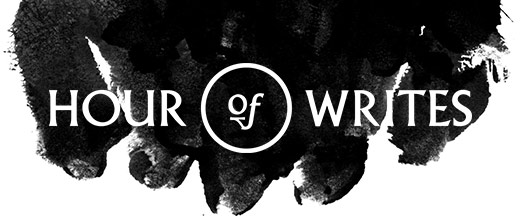We Stupid Apes
Entry by: quietmandave
24th August 2016
In the beginning, somewhere between apes and humans, one winter night a creature discovered that they could make fire.
The dark cave fills with light. At first the others are afraid. From a distance they see the smoke drifting high into their cave, scared of what had always been a destructive force. They see life as they knew it trapped in the flame, flickering, moving, dancing. They feel the heat on a cold winter's night, and very slowly they edge closer.
A small stick falls out of the fire and the flame is extinguished, the glowing tip flickers and dies. Another creature picks up this stick, looks at the blackened tip and then, dragging it behind her, catches the point of the stick on a stone wall and sees that it leaves a rough mark. Charcoal marks on stone walls. She waits for another stick to fall from the fire and repeats the action to make a second mark.
The creatures could never have imagined the invisible gases that, for the very first time, had been created on purpose. Gases that hundreds of thousands of years later would warm the planet. And so, in this tiny remote cave, the foundations were laid for the distant future.
In the dark night, as the fire dies, the creature that had created the fire picks up the longest remaining shaft of wood and slowly spins it around in the air. Each set of eyes follow the orange path, and in the dimming light of the dying fire, they each witness the trail of where that point of light had travelled, leaving images in the space beyond their eyes. Shapes that might become letters. Patterns that might become symbols.
In its trail, a flare of gases, cooling initially in the evening air, rises inexorably, out through the tiny openings in the roof, then settles somewhere between the earth they know and the sky they didn't yet understand.
Another creature copies the shape that the first one made. Perhaps in the future, they would remember the symbol and give it meaning. The meaning they ascribe could be anything.
A single burning twig. Into the high cave drifts chemicals that will be named carbon dioxide, nitrogen dioxide and methane. But it's not the name that will lead to global warming, it's the fact that the gases exist.
Already, around the fire, one of the creatures has tried to copy the two lines on the stone wall. Again and again he lights his stick, and tries to make charcoal.
The dark cave fills with light. At first the others are afraid. From a distance they see the smoke drifting high into their cave, scared of what had always been a destructive force. They see life as they knew it trapped in the flame, flickering, moving, dancing. They feel the heat on a cold winter's night, and very slowly they edge closer.
A small stick falls out of the fire and the flame is extinguished, the glowing tip flickers and dies. Another creature picks up this stick, looks at the blackened tip and then, dragging it behind her, catches the point of the stick on a stone wall and sees that it leaves a rough mark. Charcoal marks on stone walls. She waits for another stick to fall from the fire and repeats the action to make a second mark.
The creatures could never have imagined the invisible gases that, for the very first time, had been created on purpose. Gases that hundreds of thousands of years later would warm the planet. And so, in this tiny remote cave, the foundations were laid for the distant future.
In the dark night, as the fire dies, the creature that had created the fire picks up the longest remaining shaft of wood and slowly spins it around in the air. Each set of eyes follow the orange path, and in the dimming light of the dying fire, they each witness the trail of where that point of light had travelled, leaving images in the space beyond their eyes. Shapes that might become letters. Patterns that might become symbols.
In its trail, a flare of gases, cooling initially in the evening air, rises inexorably, out through the tiny openings in the roof, then settles somewhere between the earth they know and the sky they didn't yet understand.
Another creature copies the shape that the first one made. Perhaps in the future, they would remember the symbol and give it meaning. The meaning they ascribe could be anything.
A single burning twig. Into the high cave drifts chemicals that will be named carbon dioxide, nitrogen dioxide and methane. But it's not the name that will lead to global warming, it's the fact that the gases exist.
Already, around the fire, one of the creatures has tried to copy the two lines on the stone wall. Again and again he lights his stick, and tries to make charcoal.





 Follow us on Twitter
Follow us on Twitter
 Follow us on Instagram
Follow us on Instagram